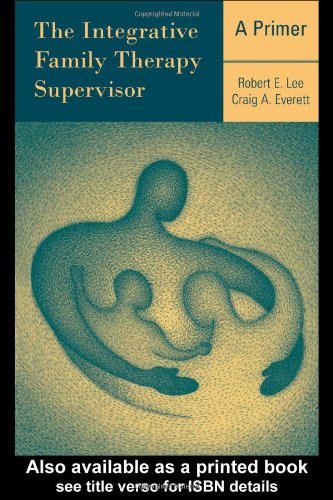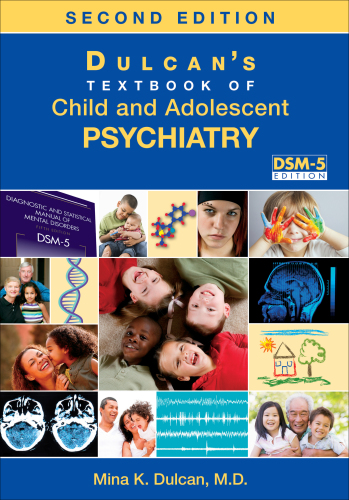Just as isomorphism may involve replication of structure and process, it also may involve replication of affect or of adaptive style (White & Russell, 1997). The supervisor and therapist may experience anxiety, anger, or depression concurrent with these affective states existing in the therapy session and in the client family’s life. Conversely, there may be a lack of affect where emotion would be expected, or an inappropriate affect. Because isomorphism alerts us to the possibility that what is being created and experienced at one level is replicating what is being created and experienced at other levels, this provides the supervisor with important data as to what training issues need to be identified. A training supervisor and a supervisor candidate were viewing a videotape that showed a relatively inexperienced family therapist passively watching a symmetrical escalation of conflict within a family session. Neither the supervisor nor the therapist perceived a problem. The mentor suggested that the supervisor watch the tape with the therapist during their next meeting and pause it at the height of conflict. The supervisor was instructed to ask the therapist, “What are you feeling now?” The supervisor reported to the mentor that, reluctantly, the therapist responded, “I felt like a little girl in there. I guess I was immobilized. This family just takes over. I didn’t know what to do.” On hearing this, the supervisor was aware that she herself felt immobilized too. “I didn’t even think about the therapist doing anything. I don’t know what happened.” As it turned out, both the therapist and the supervisor were from highly enmeshing families of origin. Even as adults they felt helpless when their parents fought. This training incident was a revelation to both the supervisor and therapist. It helped them see how powerful their own family of origin dynamics could be in their professional work. In this example, the isomorphic element was represented by the similarity of the enmeshing dynamic that occurred in the interlocking subsystems of the supervisor candidate-trainee and the trainee-clinical family subsystems. The example illustrates that such a dynamic was so subtle, yet powerful, that neither the INTERGENERATIONAL STRUCTURE AND DYNAMICS 31 supervisor nor the therapist recognized that it had actually immobilized them and restricted their ability to objectively assess and objectify the clinical process in front of them. Identifying Triangles The use of the genogram to identify elements of the overall training system can effectively assist the supervisor in identifying the presence of triangles among the interlocking subsystems. We know that triangular relationships occur naturally in social systems for purposes of support and self-protection on the one hand (Bowen, 1978), and coercion on the other (Nichols & Everett, 1986). Within family systems these triangles may define interactive patterns such as coalitions and the roles of scapegoated or parentified children. Although these triangles may have dysfunctional components, they may also serve to balance the family system by maintaining homeostasis. As clinicians we know that these triangular relationships in a family (e.g., between parents and a child) serve to lock the dynamics and subsystems into predictable behaviors (e.g., a scapegoated child). Triangles in clinical supervision were identified early by Westheafer (1984) and can emerge at any location in the hierarchy and between the subsystems. For example, a supervisor candidate who is frustrated and struggling with an ineffective therapist may seek to induct the training supervisor into experiencing the same frustration and joining in a coalition to scapegoat the trainee. If the training supervisor participates with the supervisor by sympathizing and adding her or his own additional derogatory comments about the therapist, then the triangle has been formed. Such triangles can obviously disrupt and limit effective supervision. A more common pattern may be observed when an ineffective or inexperienced supervisor feels overwhelmed or inadequate in her or his training experience and attempts to elicit from both the trainee and the training supervisor a sense of support, protection, and even the need to be rescued. For example, a rather powerful and destructive triangle emerged between a therapist, his clinical family, and his supervisor. The supervisor had expressed some frustration and inadequacy with a particular male trainee. In her earlier reports she had praised his “sensitive side” and commented on some similar interests (a red flag, of course). Now she had begun to focus on his “unavailability” and “resistance” in supervision. She reported that he had been reluctant to bring files and tapes. When asked about her change of opinion about this trainee, she could only recall being critical of his “lack of boundaries” in a certain case. The training supervisor asked to view a tape of that case and immediately supported her observations about the lack of boundaries. The training supervisor asked the supervisor to fast-forward the tape to the conclusion of the therapy session. (Many supervisors fail to review this important clinical dynamic.
چکیده فارسی
همانطور که ایزومورفیسم ممکن است شامل تکرار ساختار و فرآیند باشد، ممکن است شامل تکرار عاطفه یا سبک تطبیقی نیز باشد (White & Russell, 1997). سرپرست و درمانگر ممکن است همزمان با این حالات عاطفی که در جلسه درمانی و در زندگی خانواده مراجع وجود دارد، اضطراب، عصبانیت یا افسردگی را تجربه کنند. برعکس، ممکن است فقدان عاطفه در جایی که احساس انتظار می رود، یا عاطفه نامناسب وجود داشته باشد. از آنجا که ایزومورفیسم به ما هشدار می دهد که آنچه در یک سطح ایجاد می شود و تجربه می شود در حال تکرار آنچه در سطوح دیگر ایجاد و تجربه می شود، داده های مهمی را در اختیار سرپرست قرار می دهد که چه مسائل آموزشی باید شناسایی شوند. یک ناظر آموزشی و یک نامزد سرپرست در حال تماشای یک نوار ویدئویی بودند که نشان میداد یک خانواده درمانگر نسبتاً بیتجربه در حال تماشای تشدید متقارن درگیری در یک جلسه خانوادگی است. نه سوپروایزر و نه درمانگر مشکلی را درک نکردند. مربی پیشنهاد کرد که سرپرست در جلسه بعدی خود نوار را با درمانگر تماشا کند و آن را در اوج درگیری متوقف کند. به سرپرست دستور داده شد که از درمانگر بپرسد: "الان چه احساسی داری؟" سرپرست به مرشد گزارش داد که با اکراه، درمانگر پاسخ داد: «در آنجا احساس میکردم که دختر کوچکی هستم. حدس می زنم بی حرکت بودم. این خانواده به تازگی اداره می شود. نمیدانستم چه کنم.» با شنیدن این موضوع، سرپرست متوجه شد که خود او نیز احساس بی حرکتی می کند. من حتی به این فکر نمی کردم که درمانگر کاری انجام دهد. من نمی دانم چه اتفاقی افتاده است.» همانطور که معلوم شد، هم درمانگر و هم ناظر از خانواده های مبدأ بسیار درگیر بودند. حتی در بزرگسالی نیز هنگام دعوای والدینشان احساس ناتوانی می کردند. این حادثه آموزشی هم برای سرپرست و هم برای درمانگر مکاشفه بود. این به آنها کمک کرد تا ببینند که دینامیک خانواده اصلی خودشان چقدر می تواند در کار حرفه ای آنها قدرتمند باشد. در این مثال، عنصر ایزومورفیک با شباهت دینامیک درهمبندی که در زیرسیستمهای درهم تنیده شده از زیرسیستمهای نامزد سرپرست-کارآموز و زیرسیستمهای خانواده کارآموز-بالینی رخ میدهد، نشان داده شد. مثال نشان می دهد که چنین پویایی آنقدر ظریف و در عین حال قدرتمند بود که نه ناظر ساختار بین نسلی و دینامیک 31 و نه درمانگر تشخیص ندادند که واقعاً آنها را بی حرکت کرده و توانایی آنها را برای ارزیابی عینی و عینی سازی فرآیند بالینی در مقابل آنها محدود کرده است. شناسایی مثلث ها استفاده از ژنوگرام برای شناسایی عناصر سیستم آموزشی کلی می تواند به طور موثری به سرپرست در شناسایی حضور مثلث ها در میان زیرسیستم های به هم پیوسته کمک کند. ما می دانیم که روابط مثلثی به طور طبیعی در سیستم های اجتماعی به منظور حمایت و محافظت از خود از یک سو (بوون، 1978)، و اجبار از سوی دیگر (نیکولز و اورت، 1986) رخ می دهد. در درون سیستم های خانواده، این مثلث ها ممکن است الگوهای تعاملی مانند ائتلاف ها و نقش فرزندان قربانی یا والدین را تعریف کنند. اگرچه این مثلث ها ممکن است اجزای ناکارآمدی داشته باشند، اما ممکن است با حفظ هموستاز به تعادل سیستم خانواده کمک کنند. بهعنوان پزشک، میدانیم که این روابط مثلثی در یک خانواده (مثلاً بین والدین و یک کودک) برای قفل کردن پویاییها و زیرسیستمها در رفتارهای قابل پیشبینی (مثلاً یک کودک قربانی) عمل میکند. مثلث ها در نظارت بالینی در اوایل توسط Westheafer (1984) شناسایی شدند و می توانند در هر مکانی در سلسله مراتب و بین زیر سیستم ها ظاهر شوند. به عنوان مثال، یک نامزد سرپرست که ناامید است و با یک درمانگر ناکارآمد دست و پنجه نرم می کند، ممکن است به دنبال القای سرپرست آموزشی باشد که همان ناامیدی را تجربه کند و به ائتلافی بپیوندد تا کارآموز را قربانی کند. اگر ناظر آموزشی با همدردی و اضافه کردن نظرات تحقیرآمیز اضافی خود در مورد درمانگر با ناظر شرکت کند، در این صورت مثلث تشکیل شده است. چنین مثلث هایی به وضوح می توانند نظارت مؤثر را مختل و محدود کنند. الگوی رایجتری ممکن است مشاهده شود که یک سرپرست ناکارآمد یا بیتجربه در تجربه آموزشی خود احساس غرق شدن یا ناکافی بودن میکند و تلاش میکند هم از کارآموز و هم سرپرست آموزشی حس حمایت، محافظت و حتی نیاز به نجات را جلب کند. به عنوان مثال، یک مثلث نسبتاً قدرتمند و مخرب بین یک درمانگر، خانواده بالینی او و سرپرست او پدیدار شد. ناظر در مورد کارآموز مرد خاصی ابراز ناراحتی و ناتوانی کرده بود. او در گزارشهای قبلیاش «جنبه حساس» او را ستوده و در مورد برخی از علایق مشابه (البته یک پرچم قرمز) اظهار نظر کرده بود. حالا او شروع به تمرکز روی "در دسترس نبودن" و "مقاومت" او در نظارت کرده بود. او گزارش داد که او تمایلی به آوردن فایلها و نوارها نداشت. وقتی از او در مورد تغییر نظرش در مورد این کارآموز پرسیده شد، او فقط میتوانست به یاد بیاورد که در موردی خاص از "عدم حد و مرز" انتقاد کرده است. ناظر آموزشی خواست تا نواری از آن مورد را مشاهده کند و بلافاصله از مشاهدات خود در مورد عدم وجود مرز پشتیبانی کرد. ناظر آموزشی از استاد راهنما خواست که نوار را سریعاً به پایان جلسه درمانی منتقل کند. (بسیاری از سرپرستان در بررسی این پویایی بالینی مهم شکست می خورند.
ادامه ...
بستن ...
Author(s): Robert E. Lee
Year: 2003
ISBN: 0415945585,9780415945585
ادامه ...
بستن ...










